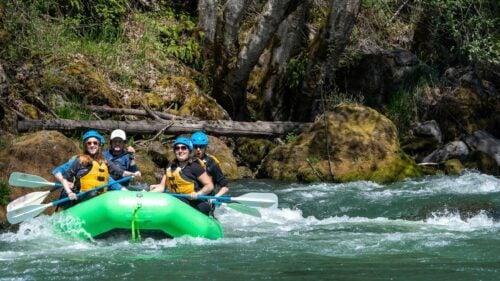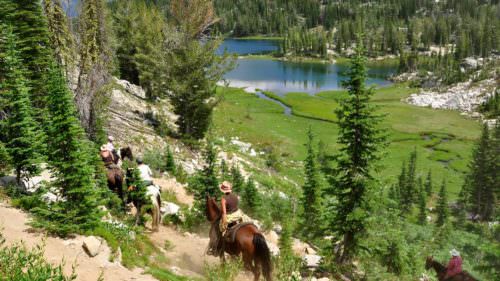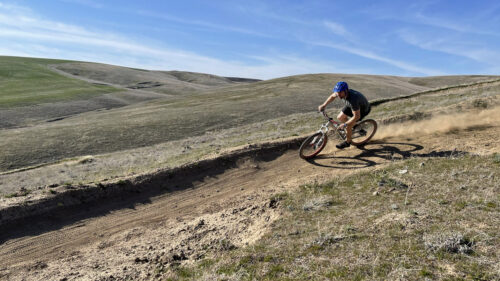Imagine crossing rivers and climbing over mountain passes on a densely vegetated, roughly hewn path traveled by Indigenous people for generations, with wagons, animals and your family along for the trip. The Santiam Wagon Road — which passes from the Willamette Valley to Central Oregon and beyond — was once just like this. For more than 400 miles, it served as the main thoroughfare for stagecoaches, goods and livestock from 1856 to 1939.
Now the livestock has been replaced by leisurely horseback riders, the loaded stagecoaches with families walking or cycling parts of the route. The historic road, which is now on the National Register of Historic Places, offers a great place to play and fascinating Oregon history to learn. Part of it has been developed into a 38-mile multiuse trail passing through the Willamette and Deschutes national forests.
New interpretive panels and an updated map make venturing into the area easier than ever thanks to Cascade Volunteers, a nonprofit organization in the midst of a 10-year project to restore the Santiam Wagon Road to its original function and bring the historic significance of the road to light.
Here are a few ways to hit the trail and experience Oregon’s history by foot, wheel or hoof. Want to volunteer? Check the website for current opportunities.
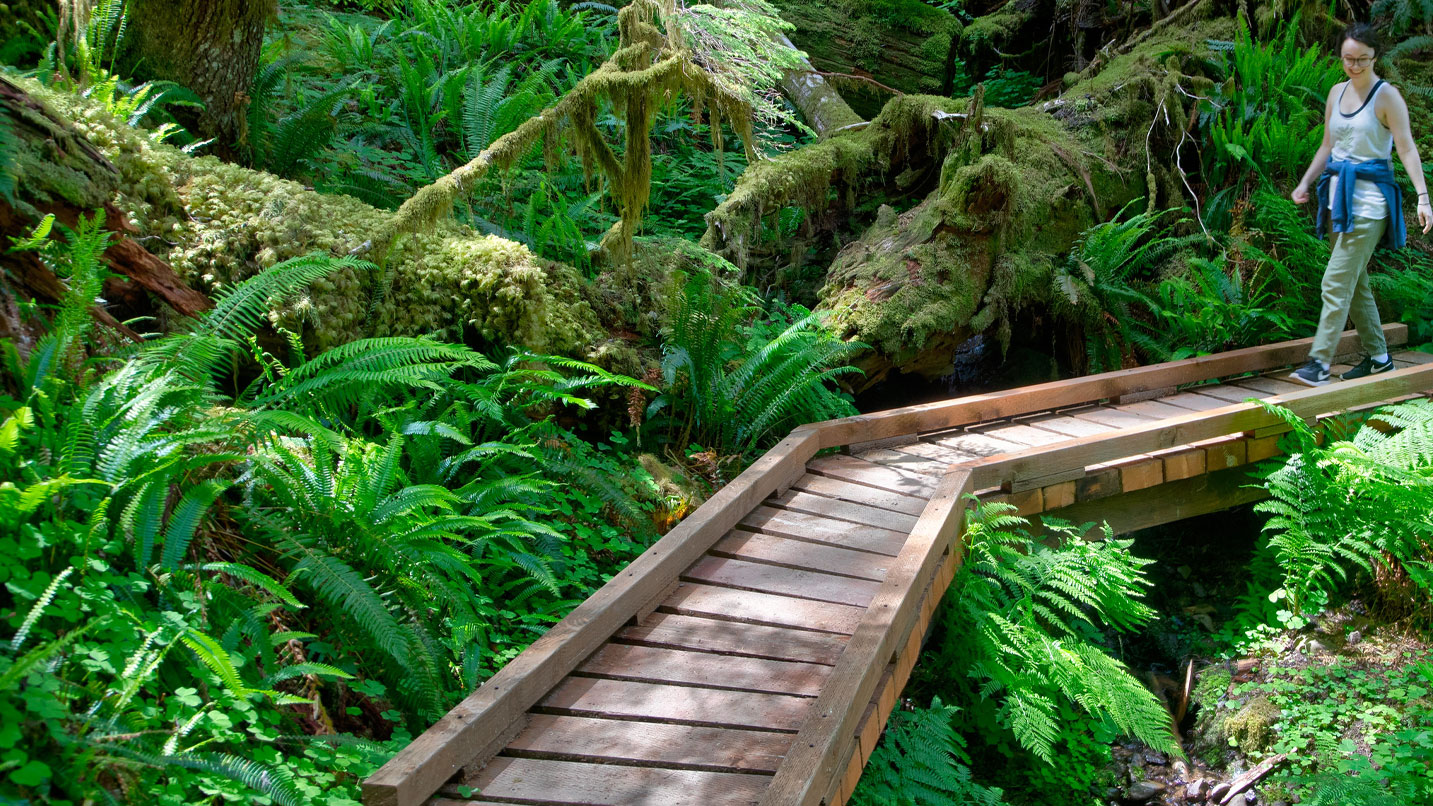
Hike Through an Ancient Forest to a House-Shaped Rock
Lace up your hiking boots to experience the natural and cultural history of the Santiam Wagon Road at your own pace. There are many excellent short hikes, as well as opportunities to add on miles along the road. The westernmost access point to the largest contiguous section of the road is Mountain House on Highway 20 at milepost 52.5, about 75 miles southeast of Salem and near the small town of Sweet Home. Other major access points include Tombstone Pass Trailhead and the McKenzie River Trailhead.
For a great hike on an intact part of the westernmost part of the old road, start at the Mountain House Section, about 25 miles east of Sweet Home. Once the site of a toll station, the trail heads east on a nearly 5-mile round-trip out-and-back trail that follows the South Santiam River and crosses several creeks through evergreen forest. Keep an eye out for the old mill pond now grown in with alder. At the junction with House Rock Loop is an interpretive sign that details some of the history of wagon trains.
A shorter, highly recommended hike takes that loop from another access point, a trailhead near House Rock Campground. On the loop trail that’s just over a mile long, you’ll love the lush forest of old trees, dotted with mushrooms in the fall along the way to a 40-foot cascading waterfall. The trail rises and falls on packed dirt and is great for adventurous families. Be sure to save time to linger at House Rock, a massive moss-covered rock with a roof-shaped top and cave below that has sheltered generations of travelers.

Mountain Bike on a Wagon-Wheel-Rutted Road to a Seasonal Lake
If you prefer to experience the road at a slightly swifter pace, much of the Santiam Wagon Road is also open to mountain biking.
On a recent Explore Oregon Podcast, Nikki Swanson, Sweet Home’s district ranger for the Willamette National Forest, recommends starting at Tombstone Pass Trailhead. From this spot about 35 miles from Sweet Home, mountain bikers can head west down the Snow Creek and Sevenmile sections of the road, riding as far west as the trail’s terminus at Mountain House. Though considered an intermediate route, it requires skills in challenging single-track riding and steep terrain.
Another recommended option is to cycle to Fish Lake Historic Site — a gathering spot for Indigenous tribes and travelers alike — on an easier graded trail. Head eastward to ride on the ruts created by wagons of the past as you visit historically significant sites, including Lost Prairie, where the Santiam Wagon Road scouting party was lost for several days.
At the end of the ride, spend some time at the historic site itself. Fish Lake served as a gathering place for Indigenous tribes, possibly since its formation 4,000 years ago following an eruption from nearby Sand Mountain. The seasonal lake offered a place to hunt and gather foods for tribal members, and later provided an outpost for settlers to graze their livestock and camp. Today you can see historic buildings and interpretive signs reflecting the importance of this location as you take your own break.
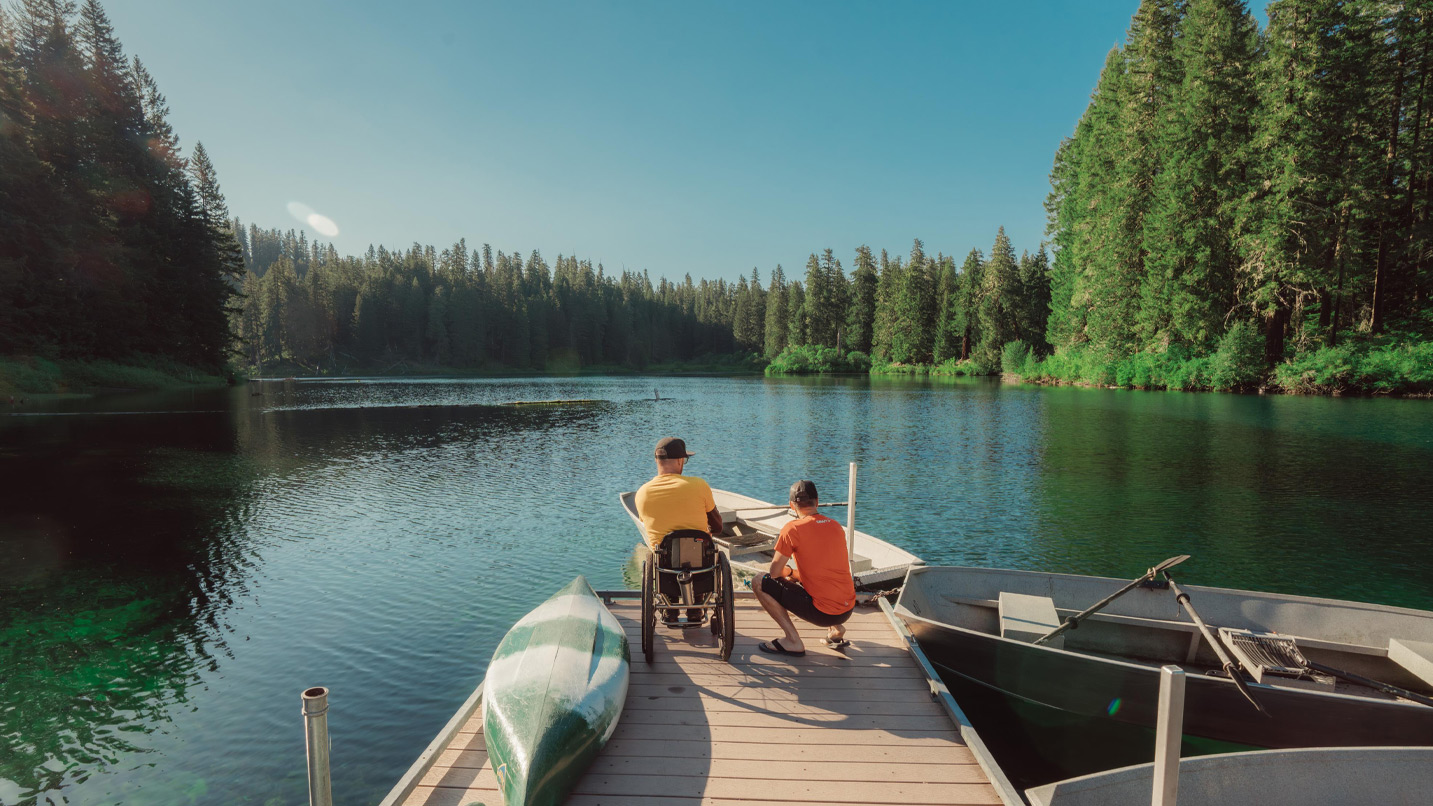
Camp and Ride From Sevenmile Horse Camp
If you’re planning to tackle the road on horseback, start from Sevenmile Horse Camp, about 32 miles east of Sweet Home. As with mountain biking, the road can be ridden in either direction, allowing for many opportunities to experience the history on horseback.
For a truly historic experience, ride east over the Sevenmile Section of the road — the most arduous part of the journey for travelers heading either direction. Traverse the steep side slope of Sevenmile Hill before reaching Tombstone Pass and stop for a rest at the wildflower-dotted Tombstone Meadow, named for a young man who lost his life in an accident in 1871.
The camp is maintained by volunteers with three campsites and three double-stall horse corrals; sites can be reserved at recreation.gov.
